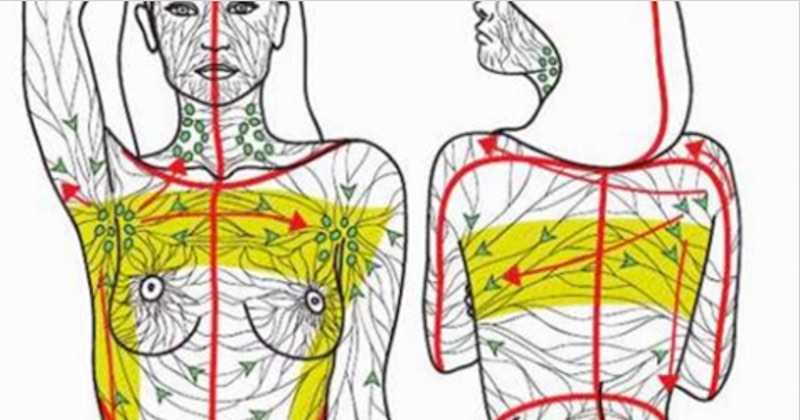Lower Back Pain—Causes And Natural Remedies That Work
Last updated on
Lower back pain has been the leading cause of disability worldwide for more than 20 years straight, affecting about 9.4% of the global population. For more tangible numbers, picture this: in 2007, a nationwide study assessed whether its respondents had experienced lower back pain in the 3 months before the survey. Turns out more than 34 million Americans did.
What’s even scarier, this tendency is unlikely to change anytime soon.
But, what is causing this painful epidemic?
Common Causes of Lower Back Pain (LBP)
The human back consists of a whole lot of anatomical structures, and problems with any of them could be causing your back pain. Of course, this is extremely important to choose the optimal treatment approach, so let’s take a look at the most common conditions.
Muscles and Tendons: Sprains and strains, usually associated with physical exercise and active games.
Vertebral Column in General:
- Skeletal abnormalities (congenital or acquired), such as scoliosis, lordosis, kyphosis, and mixed conditions. A deviation from the physiological form of the spine results in a flawed weight distribution throughout its sections and components, thus causing compressions of various kinds.
- Narrowing (stenosis) of the spinal canal, resulting in the compression of the spinal cord and nerves, and causing pain, paresthesia, and numbness.
Specific Vertebrae:
- Spondylolisthesis: a pathologic condition caused by the slipping of a vertebra from its physiological place. This dislocation compresses the adjacent spinal nerves, resulting in pain, numbness, and discomfort.
Intervertebral Discs:
- Age-related degeneration of the intervertebral discs.
- Herniation and ruptures, usually resulting from extreme physical load.
Spinal Nerves:
- Radiculopathy: pain related to an injury, compression, or inflammation of the spinal nerve. A specific form of radiculopathy is sciatica, or radiculopathy of the sciatic nerve. This is a large structure that runs all the way through the buttocks down to the leg on each side.
Other Causes:
- Traumas and injuries.
- Tumors of any of the above-listed components.
- Local infections of the skin, fat tissue, muscles, etc.
- Kidney stone disease, during which the pain can irradiate into the lower back.
One of the Most Common Causes:
- Inflammation of the cisterna chyli caused by congestion, compression, or metastatic damage. Basically, the cisterna chyli is a lymph sac located behind the aorta (near the first two lumbar vertebrae) which collects chyle from the intestines. Disorders of this structure result in a plethora of health conditions ranging from digestive issues to back pain.
Sounds clear and valid, right? But here’s the problem: Studies affirm that the pathologic cause of about 85% of all lower back pain cases remain a mystery even after extensive testing. Ouch! Such cases are labeled “nonspecific lower back pain” and are treated generically.
Naturally, this brings us to a big and scary problem: Conventional therapy.
Conventional Treatment of Lower Back Pain
Why It Often Does More Harm Than Good
Even though such respected instances as the American College of Physicians recommend that lower back pain should be initially treated with non-drug approaches, these modalities of therapy are still underused in most cases.
The next line of treatment are non-steroid anti-inflammatory drugs (NSAIDs, also known as over-the-counter painkillers), and they are just one step away from heavy prescription painkillers—opioids. The latter come with a long list of life-shattering side effects including risk of abuse and addiction.
Steroidal injections are given to many patients who complain about lower back pain, regardless of the type and cause of the pain. It is a popular approach in conventional treatment, known to provide relief instantly—but with long-lasting internal damage, especially to the liver.
Fortunately, there are alternative non-drug therapies backed by modern scientific data that work, and without side effects.
It turns out these are EXTREMELY effective for lower back pain, without any prescriptions whatsoever! This means zero addiction, zero side effects, and a better health for your liver and kidneys (as they won’t have to metabolize and excrete all those medications out of your body).
Lower Back Pain Natural Remedies
Diet Modifications
Most pains (anywhere in the body) are due to, or further aggravated by inflammation. An improvement in diet will often help to relieve inflammation, and thus reduce much of the pain, in some cases eliminating the pain completely.
Simply removing all inflammation-causing foods is a good start to help contain the inflammation from getting worse. Some of the most offending foods are processed foods, high-fatty foods, flour and sugar products, and processed meats. See the top 20 inflammation-causing foods here.
Once inflammation-causing foods are removed from your diet, start including anti-inflammatory foods that are rich in nutrients and antioxidants found in most plant-based foods.
Drinking juices is one of the best ways to reduce and stop inflammation. Just as in cases of frozen shoulders, that is also due to inflammation, drinking juices is a very effective way to significantly reduce pain. Go here for our top anti-inflammatory juice that you can start incorporating in your routine. Any other juices will also help, especially beetroot juices.
Gastrointestinal Cleanse and Lymphatic Detox
Many people experience lower back pain due to poor diet over the years. If you’re told that your pain is “only in your head”, then definitely suspect that the cause is a congested lymphatic system.
One of the first things to do is a gastrointestinal cleanse that will help reduce the burden in the colon. Then, a lymphatic detox is necessary to help drain the cisterna chyli (see Causes above). Find out how to do a 3-day lymphatic detox at home.
After these cleanses, a gallbladder flush will help to further improve and reduce pain, or possibly even eliminate the pain.
Physical Exercise
It is so important to start moving.
Studies indicate ANY form of aerobic exercise can drastically improve one’s chronic pain. Basically, the more you move, the better you will feel. Start bit by bit, listen closely to your body, and keep pushing your limits. Gradually, your muscles and tendons will get stronger, your spine will become more flexible, and you will feel better.
Another fabulous thing is core stabilization training, for example such exercises as planks and side planks, were shown to reduce chronic lower back pain by up to whopping 76.8%.
Release Your Natural Painkilling Endorphins
If you want something calmer and more focused, non-invasive treatments for lower back pain states that both stretching and breathing exercises such as tai chi and pilates are better than no movement in terms of alleviating back pain.
Some stretching will help your body to release the toxins trapped in joints. Your natural hormones endorphins are also released that help block pain signals to alleviate anxiety and stress, which often accompany a chronic back pain. Here are some easy stretching exercises you can do to relieve back pains.
Granted, your problem may not be cured after a single evening of exercise, but are guaranteed to bring small to moderate improvement over the course of several weeks—and these benefits will be consistent, durable, and with zero nasty side effects.
Massage and Manual Therapy
If for some reason you’re absolutely NOT the active type, don’t worry: there are alternative therapies for back pain that won’t require any efforts from your part besides coming to a qualified specialist.
First of all, there’s spinal manipulation—a special kind of chiropractic treatment that consists of a practitioner carefully forcing the joints in your spine to assume a certain position (physiological or not, depending on the patient’s individual features as well as the peculiarities of his or her condition).
This allows to alleviate compressions and evenly distribute the load on your spine. Scientific reviews state that in cases of chronic back pain, spinal manipulation brings short-term relief and benefits comparable to that of active exercise, but no long-term improvements.
So, if you don’t want to move much, just visit a chiropractor or massage specialist from time to time: it won’t cure your condition, but grant some relief at the very least.
(But, again, it will be better if you just start moving, as exercise provides both long-term AND short-term relief.)
Conclusion
Back pain is an extremely widespread health problem worldwide, and the conventional approach to treatment is flawed in many ways. Of course, drug prescriptions may bring you instant relief for a while, but the resulting long-term effects are hardly worth it.
As a healthy alternative, remember that the best option still is a change in diet and physical exercise. Start slow, progress slow, but keep on moving—and you’ll see the fabulous results this will bring you!
Some of the links I post on this site are affiliate links. If you go through them to make a purchase, I will earn a small commission (at no additional cost to you). However, note that I’m recommending these products because of their quality and that I have good experience using them, not because of the commission to be made.
Comments
Leave a Reply




































 JOIN OVER
JOIN OVER
The key to healthy back is in regular exercises. After 2 month of working as content writer at my homework service, I had regular lower back pains. Only after making few 5-minute exercise breaks during the day and visiting gym I was able to get rid of them. If your job is related with sitting a long time in one position, you need to do a little warm-up from time to time, for which it’s enough to walk for ten minutes, make several inclines in different directions and stretch the muscles of the shoulders. If a person doesn’t have enough free time for gym, it is necessary to walk a small part of the way to office, stop using an elevator. And on weekends, leisurely walks will be useful. For a healthy back, swimming is also helpful.